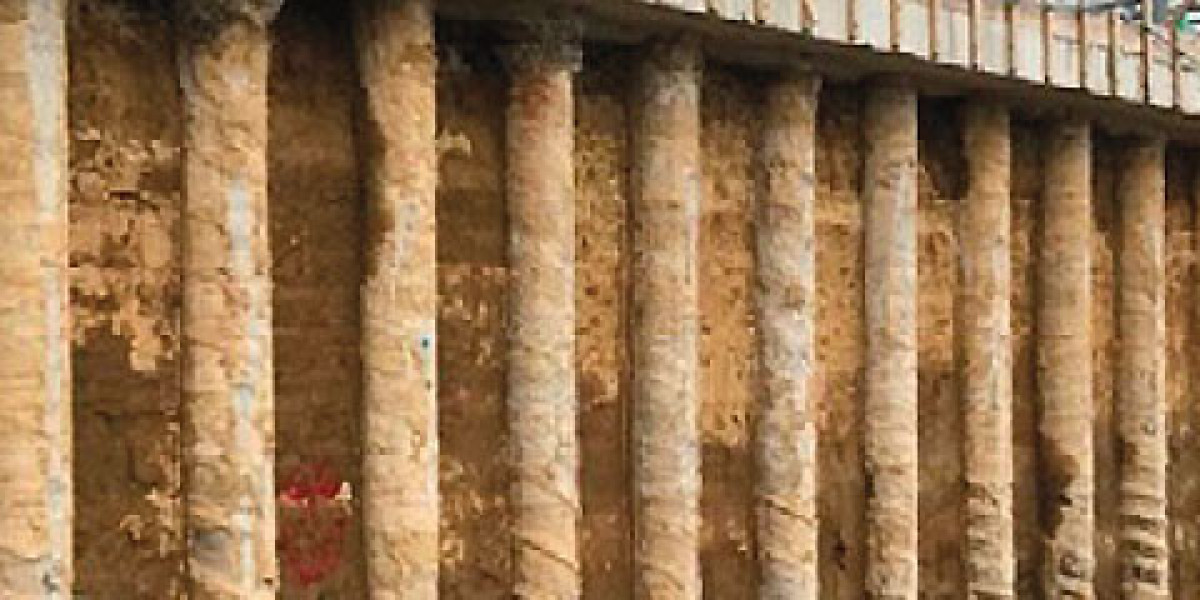Bored piers are one of the most critical components in modern construction, providing deep foundation solutions for various structures. In Australia, GECA (Ground Engineering and Civil Australia) has been at the forefront of implementing efficient and reliable bored piers concrete works to ensure structural stability and longevity. Understanding the process, benefits, and applications of bored piers can help stakeholders make informed decisions when planning construction projects.
What Are Bored Piers?
Bored piers, also known as drilled shafts or drilled piers, are deep foundation elements constructed by excavating cylindrical holes into the ground and filling them with reinforced concrete. Unlike shallow foundations, bored piers transfer the structural load to deeper, more stable soil or rock layers. This makes them ideal for areas with weak or variable soil conditions, high-rise buildings, bridges, and heavy industrial structures.
The Process of Bored Piers Concrete Works
The construction of bored piers concrete works involves several precise steps to ensure strength and reliability:
- Site Investigation and Design: A detailed geotechnical survey identifies soil composition, groundwater conditions, and load-bearing capacity. This information helps engineers design piers that can sustain the intended structural load.
- Excavation: Using specialized drilling rigs, cylindrical holes are bored into the ground to the required depth. The diameter and depth depend on the project’s load requirements and geotechnical findings.
- Reinforcement Installation: Steel reinforcement cages are carefully lowered into the excavated holes. These cages provide tensile strength to the concrete, allowing the piers to handle both vertical and lateral loads effectively.
- Concrete Pouring: High-quality concrete is poured into the bored holes, ensuring full encasement of the reinforcement. Tremie pipes or similar techniques are often used to avoid segregation and ensure uniform placement.
- Curing and Quality Control: Proper curing is essential for concrete to reach its design strength. Quality control measures, including testing for concrete strength and checking alignment, are carried out throughout the process.
Advantages of Bored Piers Concrete Works
Bored piers offer numerous advantages over other foundation types, making them a preferred choice for modern construction:
- Adaptability: They can be used in a wide range of soil conditions, from soft clay to dense rock.
- Load Capacity: Bored piers can support heavy structures, including high-rise buildings and large industrial facilities.
- Minimal Vibration: Unlike driven piles, bored piers produce minimal vibration, reducing the impact on surrounding structures.
- Precision: Modern drilling techniques allow accurate placement, ensuring alignment and structural integrity.
Applications in Construction
Bored piers concrete works are used across various construction projects in Australia. They are particularly valuable for:
- Commercial Buildings: Ensuring high-rise buildings remain stable in areas with challenging soil conditions.
- Bridges and Flyovers: Providing deep foundations capable of handling significant dynamic and static loads.
- Industrial Structures: Supporting heavy machinery and large facilities without compromising safety.
- Residential Complexes: Offering reliable foundations for multi-story housing projects in urban areas.
The Role of GECA in Bored Piers Concrete Works
GECA (Ground Engineering and Civil Australia) specializes in implementing advanced bored piers solutions. Their expertise ensures that each project meets stringent safety and quality standards. GECA’s team focuses on precise site assessments, innovative construction techniques, and adherence to local regulations, ensuring optimal performance of bored piers concrete works.
By integrating modern technology and construction best practices, GECA ensures that structures not only meet current requirements but are also prepared for future demands. Their comprehensive approach minimizes risks and enhances the longevity of foundations, which is critical for infrastructure resilience in Australia.
Conclusion
Bored piers concrete works are an essential part of modern construction, offering stability, durability, and adaptability for various projects. With the expertise of GECA (Ground Engineering and Civil Australia), developers and engineers can rely on high-quality foundations that meet structural demands and environmental considerations. Understanding the process, benefits, and applications of bored piers helps in planning safe, long-lasting, and efficient construction projects across Australia.
Whether for high-rise buildings, bridges, or industrial complexes, bored piers remain a cornerstone of construction engineering, exemplifying precision and reliability in foundation work.







